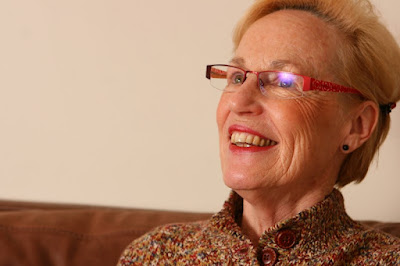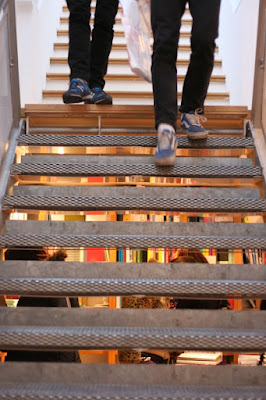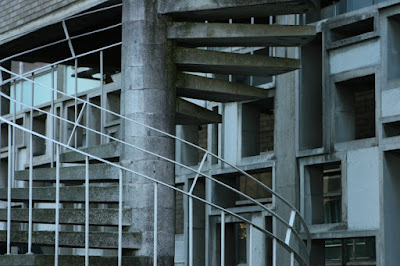The brief for this exercise was to photograph one person in a set position, while directing them to variously look in different directions, in order to see the effect of changing eye-contact. The character of the photo changes depending on slight differences in where the eyes are directed.
I chose to photograph my Aunt, who was visiting. The photo session was at home due to poor weather again. I set the camera up on a tripod to keep the composition constant (head and shoulders) and to assist in maintaining communication between myself and my aunt. I used a mains flash shot through a white umbrella. All photos: f/4, 1/30s, 63mm.
Photo 1: Straight on view, whole face is directed straight towards the camera. The look is quite relaxed and honest, but obviously posed.
 |
| From Exercise_5 |
Photo 2: A second view where the eyes are straight to the camera, but the face is turned away. The effect is similar.
 |
| From Exercise_5 |
Photo 3: Here the face is straight on to the camera, but the eyes are directed just left of camera. This seems like a more natural photograph.
 |
| From Exercise_5 |
Photo 4: Here the face is turned away to the right, and the eyes follow in that direction - as if she is looking at something of interest out of our frame of view. In this case this doesn't work so well.
 |
| From Exercise_5 |
Photo 5. A more neutral expression, with face directed slightly left of camera, but with eyes looking off to the left and a little down. The combination of the more neutral smile and downcast eyes is slightly sad, or ambivilent at least - she looks a bit unsure.
 |
| From Exercise_5 |
Photo 6. A more extreme left-looking shot - with eyes following face. This works well in this case - she is looking at something of mild interest out of the photo, and the expression matches the look - ie she looks to be turning to look at something.
 |
| From Exercise_5 |
Photo 7. Similar to photo 6, the head is facing extremely away from the camera, but now the eyes are looking up. This simple difference means the whole face seems more lit up and happier looking, just by bringing the eyes upwards.
 |
| From Exercise_5 |
Photo 8. A slightly less extreme turning of the head, and eyes still looking up, in this case towards the light, which has reflected in her glasses. Again, by bringing the eyes up, the whole face lifts and seems happier.
 |
| From Exercise_5 |
This has been an interesting exercise in both considering where the eyes are directed to look, and also by learning more about how to direct a sitter what to do (not that easy!). Next time I would avoid having other people in the room, as she was occasionally distracted by the chatting, so I took a few photos of mouth open talking, which isn't ideal!














